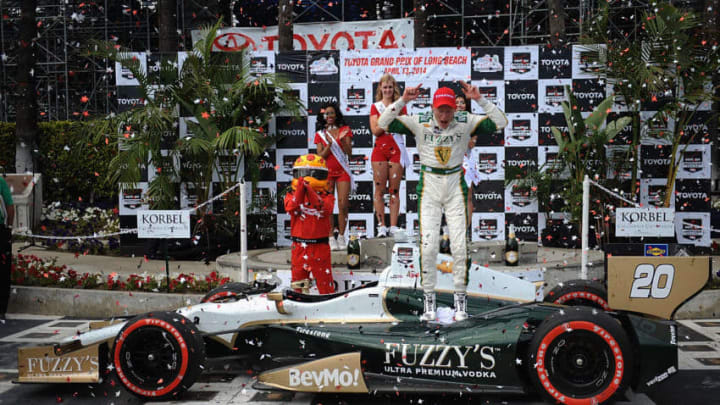Max Chilton is not the first IndyCar driver to give up oval races over the last few seasons. Mike Conway did so at the end of 2012, and he had lots of success thereafter.
Carlin’s Max Chilton, who failed to qualify for the first oval races on the 17-race 2019 IndyCar schedule, the Indianapolis 500, at Indianapolis Motor Speedway, made the decision earlier this week to give up competing in oval races and instead compete only in road and street course races.
This means that Chilton is set to compete in five of the nine remaining races on the 2019 schedule, and if he returns to IndyCar for what would be his fifth season in the series next year, he would do so as a part-time driver.
But the 27-year-old Briton is not the first driver who has made the decision to give up competing in oval races in recent years.
More from IndyCar
- IndyCar: Two teams with no drivers confirmed for 2024
- IndyCar: Chip Ganassi Racing news hints Alex Palou announcement
- IndyCar: ‘Addition by subtraction’ could pay off in a big way
- Team Penske should make a bold driver signing for 2024
- IndyCar: 5 teams that still have open seats for 2024
Mike Conway made that decision before the 2012 season finale at Auto Club Speedway, and while he has not competed in IndyCar since the 2014 season, it paid off for him during the two seasons he competed in only road and street course races.
Conway was involved in two nasty crashes in the Indy 500, one in 2010 and another in 2012, and these crashes were the biggest factors that resulted in him making this decision. He competed in seven of the 13 road or street course races on the 2013 schedule, one driving for Rahal Letterman Lanigan Racing and the other six driving for Dale Coyne Racing.
After starting in second place in his second start of the season in the first of two races at the Raceway on Belle Isle in Detroit, Michigan, Conway dominated the race in his #18 Dale Coyne Racing Honda and led 47 of its 70 laps en route to a 12.971-second victory, the second victory of his IndyCar career.
He took the pole position, the first pole position of his IndyCar career for the second of these two races the following day and led a race-high 31 laps, but his pit strategy did not pan out, and he ended up finishing in third. When the 2013 season ended, he had finished six of the seven races in which he had competed, and he had finished outside of the top nine just once.
In the 2014 season, Conway was Ed Carpenter Racing’s road and street course specialist behind the wheel of the #20 Chevrolet, as team owner Ed Carpenter drove the #20 Chevrolet in the oval races. Conway ended up competing in 12 of the season’s 18 races.
For the second time in his career, Conway won the race on the streets of Long Beach, California after starting in 17th place, as he also earned the first victory of his career in that race back in the 2011 season driving for Andretti Autosport.
He then went on to win the second of two races at Exhibition Place in Toronto, Ontario after starting in 11th before making the final start of his IndyCar career in the season’s final road course race at Sonoma Raceway, an 85-lap race of which he led 21 laps.
No longer set to compete in any IndyCar oval races, how will Max Chilton fare as a road/street course-only driver? While it may be tough for him to win races like Mike Conway did since Carlin have consistently been the slowest team in the field and since he has not recorded a top 10 finish since the 2017 season, it will be interesting to see what kind of results he can record throughout the remainder of the 2019 season and perhaps beyond.
